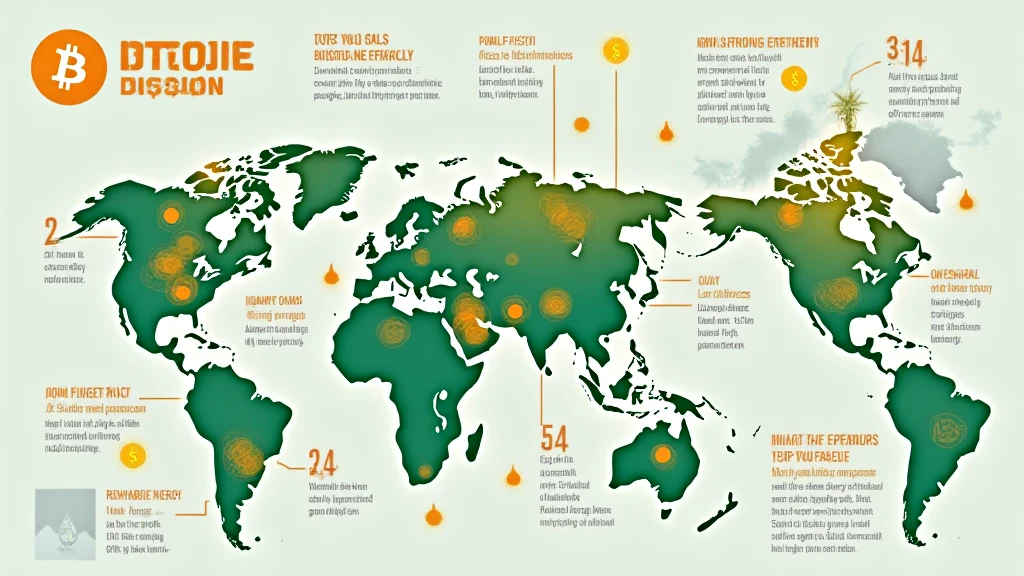Introduction
As we navigate through the uncharted waters of digital currencies and blockchain technology, one pressing concern has come to the forefront: energy consumption. With $4.1 billion lost to DeFi hacks in 2024 and Bitcoin transactions consuming vast amounts of energy, understanding the energy efficiency of the Bitcoin blockchain is not just important, it’s imperative. In this article, we will explore the intricacies of Bitcoin’s energy consumption, its implications for global sustainability, and explore potential solutions that can balance the scales.
The Rising Energy Concerns in Bitcoin Transactions
Bitcoin, the foremost digital currency, operates on a decentralized network that necessitates extensive computational power, resulting in significant electricity usage. Recent data from the Cambridge Centre for Alternative Finance reveals that Bitcoin’s annual energy consumption can reach up to 128 TWh—more than the energy consumption of some small countries.
This raises a pertinent question: Is Bitcoin sustainable? With growing concerns about climate change, the cryptocurrency industry is under scrutiny for its ecological impact.

Understanding Energy Sources in Bitcoin Mining
Bitcoin mining is the process of verifying transactions and adding them to the blockchain, which requires substantial computational power. Miners rely on various energy sources, including coal, natural gas, and renewable resources like solar, wind, and hydropower.
- Fossil Fuels: A significant percentage of Bitcoin mining is backed by fossil fuels, particularly in regions where energy is cheap, leading to higher carbon footprints.
- Renewable Energy: The shift towards renewable energy sources has become more prevalent, especially in countries like China, where hydroelectric power has fueled Bitcoin mining operations.
- Impacts of Geographic Location: Energy efficiency varies considerably depending on the mining location. For instance, miners in Vietnam are exploring local renewable energy opportunities to optimize their operations.
Current Solutions and Innovations for Energy Efficiency
In response to the energy dilemma, various solutions have emerged to enhance the energy efficiency of the Bitcoin blockchain. Below are some promising innovations:
- Transitioning to Renewable Energy: As eco-conscious practices gain traction, many miners are investing in renewable energy technologies to minimize their carbon footprint.
- Energy Efficient Hardware: Advancements in ASIC mining hardware have improved energy efficiency, significantly reducing the amount of electricity consumed per hash.
- Layer 2 Solutions: Technologies such as the Lightning Network allow for off-chain transactions, decreasing the load on the main blockchain and thus lowering total energy consumption.
- Carbon Credits: Some mining operations are purchasing carbon credits to offset their emissions, promoting a more sustainable mining process.
The Future of Bitcoin’s Energy Efficiency
As we look towards the future, improving Bitcoin’s energy efficiency will be crucial. According to a recent study from the Bitcoin Mining Council, a growing segment of Bitcoin mining is becoming increasingly powered by renewable energy, exceeding 50% in some regions. Furthermore, regulatory frameworks are being established to encourage cleaner practices, and countries like Vietnam are seeking to draft blockchain-related regulations to promote energy efficiency.
Challenges and Feasibility of Energy Transition
Despite the promising advances, significant challenges remain. Transitioning from fossil fuels to sustainable energy sources requires considerable investments in infrastructure and technology.
- High Initial Costs: While transitioning to renewable energy is beneficial in the long term, initial capital investments can be a barrier for smaller mining operations.
- Regulatory Hurdles: In some regions, inconsistent regulations can hinder the adoption of cleaner energy practices.
- Market Dynamics: Fluctuating energy prices and market dynamics can impact the motivations for miners to adopt greener practices.
Case Studies from the Crypto Space: Successes and Failures
Various miners and companies have tested different models for energy-efficient Bitcoin mining. Analyzing these case studies provides valuable lessons:
- Genesis Mining: By leveraging renewable energy sources in Iceland, this mining company has successfully operated with significantly lower energy costs.
- Bitfury: This mining giant has committed to developing energy-efficient data centers using clean energy.
- Failing efforts: Some miners have struggled to make the switch due to lack of access to renewable sources or regulatory support.
Conclusion: Balancing Profitability and Sustainability
As Bitcoin continues to gain traction worldwide, addressing its energy efficiency will be critical in ensuring its sustainability in the long term. Striking a balance between profitability and ethical environmental practices is essential. With the rise of renewable energy sources and innovative technologies, the Bitcoin blockchain can evolve into a more energy-efficient system that aligns with global sustainability goals.
In Vietnam, the tiêu chuẩn an ninh blockchain is becoming increasingly relevant. The shift towards cleaner energy sources will also enhance the credibility of the market, encouraging a larger user base and adoption.
To summarize, understanding the dynamics of Bitcoin’s energy efficiency is crucial for all stakeholders. Actionable strategies and robust innovations are vital to redefining the energy landscape of blockchain technology. It’s clear that the future of Bitcoin hinges on its ability to adapt to these challenges and commit to sustainable practices.
For deeper insights into cryptocurrency trends, visit officialcryptonews.




